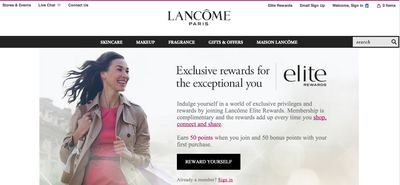NEW YORK – Marketers can learn a lot from the results of behavioral psychology studies, according to an executive speaking at L2's "Sold: Why Consumers Buy What They Buy" clinic on Nov. 3.
When attempting to motivate consumers, the way a proposition is phrased, presented or has attention drawn to or detracted from it will lead targeted individuals to act differently even if there is no real change. Brands can leverage these findings to increase consumer engagement and influence consumer behavior without the consumer feeling manipulated through 'libertarian paternalism.'
"'Libertarian paternalism' sounds contradictory: a libertarian is about the right to choose and paternalism is improving the welfare of people, but we actually believe it's possible to achieve both these goals," Jordan Goldberg, co-founder & CEO of StickK. "The way we do that is through 'choice architecture.'
"What is choice architecture? It's someone who designs a situation in which people make decisions."
The carrot and the stick
For “Using Behavioral Economy to Influence Consumer Behavior,” Mr. Goldberg listed a number of findings in the field of behavioral psychology that could be translated by brands into motivating the behavior of both consumers and employees.
Among the most well known situations of what Mr. Goldberg calls choice architecture is the idea of the carrot and the stick – whether a reward or the threat of punishment is a better motivating factor. Studies have shown that, in general, the stick is the more effective motivator.
This does not necessarily mean that a brand needs to change an offer or promotion, just the way it is presented.
"You can go to your employees and say, 'Everybody has to contribute $3,000 a year toward your healthcare payment but if you complete your biometric screening then you only need to contribute $2,500,’ and that’s framed as a $500 carrot,” Mr. Goldberg said. “If you say, ‘Everybody has to contribute $2,500 toward your healthcare and if you don’t complete your biometric screening, then you have to contribute $3,000.’
“It’s the same thing, just one is framed as a carrot,” he said. “The second one generally has a higher compliance rate than the carrot, so we encourage our clients, if the are comfortable, to adapt that.”
Research also shows that lottery-based rewards and the allocation of funds play a huge role in consumer preferences. In a survey taken at an airport, the majority of consumers said they would rather be entered into a lottery with a 1 percent chance of winning $200 than be given $2, but consumers were even more in favor if the $200 was changed to a $200 gift card for fine dining restaurants.

Silverseas' Silver Muse on-cruise French dining
This may seem paradoxical, as the $200 could be used for dining or any other purpose, but consumers think of the money in context of their budgets. The former offers an opportunity to pay a bill that needs to be paid, while the second is added to the budget allotted to fine dining.
For a company attempting to motivate its employees, this means that a bonus is not as strong a motivator as an equivalent value offered as a vacation for the family. The employee would understand the bonus as money to spread amongst many costs, but the vacation offers an increase directly to the leisure budget.
“When you have non-cash rewards there is a greater sense of connection to the brand, to the reward, to the experience,” Mr. Goldberg said. “The cash might be used to paying the utility bill, that might not resonate you, you have to do that, but now you can indulge.”

Lancome elite rewards
The illusion of progress can also be used to sway consumers. If a consumer is given 200 loyalty points and gets a reward at 500, they will be more likely to get to 500 and thus became a more frequent consumer than if they need to reach only 300 points but start at zero. Either way, the consumer needs 300 points, but offering the “bonus” with the higher reward ceiling makes it appear as if the consumer is 40 percent to the goal already.
Lastly, and most simply, default options are very powerful. Consumers are unlikely opt into or out of anything, as demonstrated in organ donor laws across the globe.
Keeping up
Appealing to a new generation will also require brands to rethink how they market products.
According to speakers from The Future Laboratory at the U.S. Retail and Luxury Futures Forum 2015 on Oct. 21 in New York, millennials’ coming-of-age and entrance into the luxury market have caused new trends in retail to emerge to meet consumer demands.
The rise of digital and mobile commerce necessitates a new approach to in-store experience, and consumers’ tendency to interact with brands across many different devices likewise demands a “total retail,” or omnichannel, experience. New technology offers a number of opportunities for brands to take advantage of this shift (see story).
Indeed, new patterns and mindsets in consumers will also require marketers to be constantly ready to shift tactics as consumers shift behavior.
Now in the “turbulent teens” of the 21st century, luxury consumers are changing their mindset, forcing brands to evolve along with them, according to an executive from The Future Laboratory at the U.S. Retail & Luxury Futures Forum on Oct. 21 in New York.
Presenting the results of a survey of United Kingdom and United States consumers it conducted this summer, The Future Laboratory found that “luxurians” in these countries are generally seeking out experiences over goods, craving a meaningful human connection from the brands they interact with. Brands need to respond with interactions that play to consumers’ intangible desires that exist outside of material ownership (see story).
"Why don’t we highlight that yellow brick road and get people it?” Mr. Goldberg said. “If you need to get them from one path to the other, you need to raise the attention to the decision.”
Final Take
Forrest Cardamenis, editorial assistant on Luxury Daily, New York
{"ct":"cP9FgWfpZDVabuxy9LsjbeaCuDyC8Rrfg6Ll\/ZFKD0newVeDbfcFceYsp9fe2EABOaqHMoKd3brX6VIPMPJ9bHcoUcDM0DVvZySJKw5kCxNAM0BJdjZFGu8y7qedggTUnZmm\/aVg53nntirNVcjw9W70yb0cH\/VVslotOj9wfs2ulBGPxZQU54aCssxYrZvDLE64NR98QcQublJhOtn5kBGuplQJ2uoDppVG9IbgZDCr9nIzlyprTv77QIxM9nLsEcfsu0mzbjupUjgSolulb1gL04NT1RoUWxoidt36SDCfxVji6sQLVVPdfEUrLf339a4ZDdPhA1N6cGYVaNiPNpWDowr0YGcof68Bp2Us+5oxYoXSAr4m659txjRikr\/XnwJBcBabkKaPmJM8PChS9aSzusCKnfXnH6ysy77VtqCmc6F2tcpNqPPz3WH6XQyOWJafLx0rgYRmzdek\/cQ2S0AGALYkay+NbDMVnkeAhILDmElvf2xjxYHubrJ5BJEKqb19hZa7uODnNjrTF7S0\/Z0SadqMePFEtK3is9XW2MqeGSBBtOlFVnI9IZaGpmEeEjTN\/WOxb7daRbAvMJhVlIWr7TkzS1odk3H64nE2fbixoNseB7aQPNASojEr2kTyFOBVvtzxqgX94OB9jj8ejri8BJUk90\/96xZz45PXFkmakwGwJ7KYBOcvd6sRphYbxTNC2eNModYelESx\/Trk8VZ6lUR764b4VKWkvmZeGfqjdXjvek+h2ydl6WjjkY8fPgqq1I5wHRS5ByE9CA8znYcCzV77Sgaer2x2bbtLoweEwyW1DctEvAkmLSmCBZFHwq1gE+S\/nzLv9GuyuDKb5vaiFqklU2NOyKl4BZsT6cX5UgkjMwJZ23zOk4894ekJDaNCuxO4PkKj8F1edQEvyigrBhJEfXdS+c9ZPp8oPoDTMvbiH1TLG6AyDH17jd\/dTqtriLk\/nM\/obHHTi1MJvX37EQQswiAbEpmieBtUqs4sOx+trPr593YV5JYcOGi4h4wP4mjCq+WBcIAwnsH8Jq4qExdUAvJQSmG+uyYcr41oWWO2pZaRMizdXL\/ipkK1EsBJJ0M4Zibs59kJGfln\/cOyg\/MPJ8muUxFaJFkoHPfXOuNH8hAQlXW6Aa1ps98Wsb7I7htseeFCI4hrrJYZiiOUOn7EKGoRBVCY2i3Fkw2rqHHOw7HrMbJWLNoy5y4BHCiMOHY4u612\/5r5JMQlViVm78Kbze\/VHIZtoGtmcBJ53hKmBGSo04VWEz\/wH0wCkC80CCHloKQICsYkNpCCgDY81jMarpBGUNDGhCbT4VQX8S7Ff\/aMzCjkptvsbE2zx1DrcwKsUG2eQu\/ZlsBc2llASAt315hhnxmLNS+AFLbInFV6BG+kdRwXV0vyH+EIG4TrKTwN3\/\/PvVgVbj49EyWIdfhc1da8Au0AKJxV4A8bJXqIngazn+XDd\/KX45zxf0HDuaAZtp8Nsxa5uc6E1B7BxKZu8L8khGFWaT8YSNqDBJHxxYaI96uQlOxjoMpcNW1z22e3bOYJ9wrhHzVW4RXM9\/YbGUpwOGfzddbBjDLXd0xHfPk1kA4Ir9Cjz2xFSS4\/\/TkqFQv+M7yicO\/xWEAwg1+qDSaU0wpZxwHQq\/BrJAS\/amml+KPeFev97zcgLXaaUejDkx2e4I9CmCb3Worf9BYQYqWlmuVKXzFsT9XkL6nXJEH6SMAKHVBMGdXqUjoCAJn0eLC0LCx8gMSQdeLFmWgviduO476l73L5NT8PAUVHJ6R4JIq4GtDfKonvD+yBWeyGL8tDfqm\/xkiW80zYEQaXyfNhV+6JyCbq8iESpdMQfQMc7WkmBdC109BAVX\/CpC4ILd2ytcM\/0V3tBv75Z58mrUUI5mE0oyTMlvxCFdu04U90QBHOf9pbTddfq1JB89WN81OWtVBRHsvT1sumw\/t2VLBfzsau8d1cR+5pB628doIQoe+nXQDYME+NVji28ATgYARv2nG+\/cEp1jT5LDjFIaDeD\/PUZ+jL3f2aRemaLbsupL\/skYeCsYTZkNurB2Dt3Z2b1iapGK2NLm+nFPcUJOx\/h9OVfGsL4SmyoMOFj40Y1nNgq5bfhBCMvXEj7mDDt17azZYwFYX1Yl95jpfsDI2MZrMHB151cibnb6K9nfH\/MQWN+bnpdNVhCtPlj+fF3mZkuye37zGlUgaL7b8nMcoJcth6kIJq\/6bO4eLpYers8AY+FYa5aNFGxepPelh0neVj3UhLAxwWt56njVqXtp3BMZtHJqOZ3tJMoE7rDpADHZF6yUgDwedSWoKe61ilOwmE1nWyOSg2M0lAPQLGYvBn4b7Q2Pc2vm+dCOO6101p0dWM104kdWbFbBgnmJXo0QDfNjlyK9qftD6MbI9hDiAHvtB7\/qOLHKJ5NgEOpUi46NvesO5hOrvBYPFQNioA9sjxrNgoo46YilQthnRMGoFIQrMbGkUFxHinH5JIg1vWQri5YVeSiQpxAapHD5xupiSVsblFRralN6RtLRbvqcOVjwYNFpxsoAtTJ2qbXokaFF2gaoCnxUJLTEKdsskULK+e72eYuBTA5f6vZxMM8oklXF1vu3EJQdSJONudUohvGzRVI+dFiBf6jLOtKbP+Qf1SWIzsVLKEoP8VPtdku8FsA0x2KP51OzozxTOCFnd5a15584mG1HDTTwTCJxUE795b7eNANtXnAJYlAdHEuKHuTQ2AjaiflajnD9Y2BmRq0F1iplDzvt21H2s\/GQU34h9JrrIWeW5J6GwiJB4QGcHr23DnDXGqZGHPzUSyKahzWUkuXEI7WHod15988r4Qc6pz2KgQsKEkyQ0\/8AWdPWtenAZdd1ny\/B+lg37uB6EzXaqy9U7yd9kHUR\/h\/HUKiQudwph1kGYzyYz1rLSMMOptZxdmyK9nXjifWJWadszrFsyr6tSPFNY8tIv4TsFm7zPZbKAfQqJTwH\/MtW715OSW1i5\/nVlRH3+5sOl3mpBOYfG\/LhdAxCcBa6uDCecUu9Bkj54sR++HB3+bcunyYuxG5gSASU1CP032FrF2RE3exbHkWVgM+VqXt\/qu\/+lliMqBGJb0hPA\/ow130Ec4gSsKD2cMz20ljf46gnPibzCyPplRFqzYUyJsjF11Yy2gUcsLWVnqUSavoWhMiJiqveVAITrLz9r6l15ILkfnM1YxzmhG+67JkiuGA4aQkEAqMLiQnZeywht\/X2CNiEDvO8Nn5QKx5hOnTib14kMxG0U2\/QDLbZSJJT0k1H4JrkrC9dsvElIW7D\/A5XiCOZNIHM79iou4NfhENMNd\/YNb6ooYlF8xBpBDV0Ri44URRz+5IhO6XemnDr7T8WPTD0jh28vnA1JBp7h\/DYFIyPL107g0LVBEepKboyno2rjwLy1rUA+uLRyiTZSEaLWo0rthAAQWnNp9NX1k3H+KJ1sWRxfUHTompSBFe5LM6jlFftGfFeDprxUsry8hsJQhMlxHPIId5O4V4AmQ8eRpyV33NqWI1nBS1HsayRiKqUB64A\/Wzv4RmhDR8uCKJZEHcguzeqLy6z5wEoJixstRlGaHrUVtvL84OzC7N6KG4A0MmagL3vzLIi5npqom0o8cfu5X\/iuJrKTZMGeqr5Wu8adYlhJLOTtLVbXk0P8cUNBSwzco0CYkKjSURsyFSVdPZKgz\/TTEq\/y7Zduyz3FJc7izYbwDzC8CourGQ3wZxZMxIBp\/cDd2fkSwRPj9RBevPQajaBuoWf5DOlnK697AoCKpfeWbNcCdeQFiiXf7wsrCWU\/1XTmkQyRuEotnaByJTzA+YGfMSeWuz8BYvtEVc4CJmtqF0iar82AwVFwdspdyZ1iL9iv9pjxXmJCjIafNxpiuJ5Fb06lgtFQUCfqykjRhBnC3PvpAUFxTkd8p9SUMTF0nlNlQIOuzpARyLFzuCeRYV8m20AthVLee\/3YpwZNAH\/0VuROTp9UZ0RRqsRmMBXCSJ8LaQuOZNBRlEy9\/dOOCFYDtW7fs5atzs2hXo1\/Cfg4tVHgZBRexjfZpWB1bX9sbkzYUP8teD7ZuxPFkd72wtDgOjWKWKJs5nTChT8uJoYyqTbQLWTTEZpIn2jfQigbs33TD8O3pKnYFHBlNHUyzewCNHiZDUbEDQZVYmbIgJgtZy9buiGYkfZWlkzGN1zLKzCE0xWXe3ajnm8Zenl3JQ8KrwA+Vq7pmWyoyjsVhxEzqyG8ffV5Jg1D3\/9iFwiYILEjTEoWDsXHk05Yt06SqVaFMRzy3DthRUZQcTgVQtf0c41+rbPeV1U8ZLWhkoCc1BNAYeqV029YcnSHwZWoFMS\/CXXQ1reVMu9zOTB+SBJl56Sv+s1GT7\/5xm3Qhd2br46o+WFn04S+EjaJPuVaaQ3023hs4pkvg8JVnPY4SkpZ+b48ncP9seZMawFwkTLfq4Ry96jPp7bx+XfHnQfvTR+Hu15Xy3TXSgrAE4wa6f3dVClAnfK85AiEYvWpL0cmU\/ngzB09pBgwW2dUX2ACJ8VlES+vGcW33+xZ6dmuH5kmdBGJKTwHubn9YwtrA1NUFWyGaX14P37ckMoDaAjv5cOVWuRdoRYJOQWvqYH4BJT23Bt4ULnrj6e6\/CJ5IWMeGrt3Iw1+gGjjeRyAN7NRQ3ViO0qc7N1nAbiF2SvQrSbqq2lgKG+hFFh1ZDBe9VttfhRWVLRvwprm\/o1otB0cP2CxCawBvQrNzRMw7R\/9blx7fSatsgRSyyEJFOaNPfWHVNPeSom1f7K3Qkp07jU1JjIVFKRvdgNVV+y6M9ARBlICHRg6dM1gqgfiU6k9mXMkVTwdXhNwDclZW7EP0rsyR93aBdz11HJqa3tnECYMEC7BMCL19CORWeKiGcTl9TsGLEa6\/Bg0Ttp\/SPZtmDjVRuRR7+30\/coABZTs\/N+pvN3jQtJ5vAvcifaxKb7pBgS\/YY\/5xJwyw6IA3tbPYJ\/oY2HDyc2Om9Iy0zeYCR8F\/kRg7ULpbI5N2iRSJ0T46RQQcBCFuNBprZUbtNMBJDqI+Zx3aRnA0aTRNT8dM8w3c1um2\/NeInmZEPx13mRExxHPEQG+8V791EQg3Hg3XaydYEbw8rZbHY202NAjfk2BQCIvwQnDHp3BI3mbhBg6GNs3m8Zngct5vJYNShIyUav0y1EY90ZVxFXBCbhcfZJvVJAjrj3dmwwsrJS5C\/RQ9pOMbKporKEb4I5LDl8g0\/2cFy6JpZaxa12htfslNVrwbOWOO2mPTYNmNONMYxKdjdVG0vUXEyrTJQGayLsGwADrsac\/CGHjRdQjpWjRyoA5J4aqRcIxHU0vbuP3+ROowBjDItdGcR5VXDhUtLqWfnWcSAWyOEWvnOEjrc2ho1OZf1PFoXkWPqaYwMUuxRsCD7m2bvgS+tGi0pDjPfYTKKgMsq6PHmWCM5UBvSKgUKYrXhjoQ9N7UFkrOQ1eLQcLp4fivxzC52g0WHxl1RDrGh50SZqzBHMmTJ9mYWjinTCMogSmB+lsHPOS+UNDFKuN+XThsEnWsBUUq1v4NOoyquuESZPwaTKSNUWSCBdFzCMY97b6fVwImyXIOXEBnO5JsqGHfiVDkLI8gBOw+lPdli4lIVaRsLzN1TccCO5HE1kD8hDDDoe7UwqW3ddopLuuSZljAfZSpYWPUGWNXcf8Ip8kScy\/ei219U2j8YUEb+UEgVUzOVel9ZGJ5Fxv70ntXn2od7CXCZM71Jvy6ijcH\/0SymZJQ5TGJLeiFCR7Ohe2CBdqEjlR+9BDdiwxw3I\/JjFhRnP8XHKO7EcOQALrNdiL\/ueUH5yEncJo1VG\/hv+kigFr362wDL3mFYKOZelPOtMsK0vG5pT67s0cbMOFt1gNPq\/0s7nD69WNrrDpo3ikdF\/DysS3phjvtyhw6p\/pkdAZeyXYqQd1JpevHGiAEURzq35734UTyH\/EDucSQwBTZZxzFF9EEpqf9D5l6Q+kCFmWjVvaL+m7EbqT8zKTtbQ7r30ztKHDf27blVpGT4KVkHty4Rw374ixg7qWJDJMs13ppXEit5p9tZ9PpskeB\/HFxExpjhRI7U8iK57IImtvZxZvhuhRZYgt1DhKtyfs3GyJHjI4GVUZXTHUT35mqCAyYC98Q102pUXhTprIsiKqg0moB+VjWj4oKfSdbH336eTPdnU6SZqn0cZqU70P05bThHAyGYEoWIhA+Bm9CYxa9lG2083I4Ytv7llBnLE5T3Re78DlZ8YtpxX4LmZ6IgvoMYZIjlW2wzG\/r3B2+P6Z\/g3tLt3PmBO0T20R68ctgNM2ZZRx0zre83WzoY3NPM\/yprZR4rnf6b85rpDhshzWg0nuHO2WJ49on4+J0KwxYCLzO3lDvXiSBasWVAa\/QtON+Vowb82M7aR62sGexYFFt3a6hlnq9yKV4skC5DrhPJhmAN6Bq3vwp7Txb9mwMF23VR+uQWAOscoINprCDn6MSigoPDCIJ5DPlL88cxczEZju+uckd0x38jjND19ENW1pwSqjDeSmYIL15TURJLUnN7dp2iYPcuWVJu\/CzYOzbL5YF1UwuCBrr2XfVSrDW5YIuNkHA1Ie6U1Jz2SpwllX+7javmbw1sr62EddcXuXG9XPChnBW0B97w4QFgxgPrebdT+GdJbNsQOyN\/ilIYJ\/aDiqSd30dNfFlwHIGXkgRc2dnYtaM2txAImEc5HPlqoXlFMsyyNfBAY5UkcELBGKuEwWQmWMpP2hwzAA5J0hYqeZsUE1AxkxTH26\/WT\/cUFuc8Gq0OMdpyk8Au5USadgJd7c\/5XQJDcFkVpctUYYG+BpLPn5tUqDgnOptMlQCRzG\/Wo+91iruGeu2W2w+2lU24eKodEEiRm8LO0XK035mbRRrVY4UHwn6nN7xrWrDH3Cds4feFwldLKS3XAVA\/3mmP7ypxto3vD4RJUt9S2D1J8ZQdWVi3josiMQ68Rt+MYpzLdVaCwSXEgx1bT6kPuIOAbvnOeYJ\/fpHkZp23LkezzD72za207pi57abT5PsppAzR8smBcIrdEnKUWrWLaBmOu0jasKMk7sbWdIF4J4oQbLQ6sfSnu\/IGmc0eLX6WhD7ufoTZ3kiV5mXRffJPXQ9YH6Nhn1NpRasPoEQl3HKho8owQMj7znrMb+hX\/WYS3iqOxsoaM+XL2gISdmD82J6GSqxv\/sef5TSzMujfdZtEn4\/hC59MI23hqYPVBUh3HI5Jiy1bX\/JpGsMo81Ksq3HSB3XJ+iXVvW8oZzh33yz8LjNqm6ezFvOFtBJvORzYDTX9sGrvgtj4b6Nnl5b3RLG\/2MJhufJZNJbPqUXNkwBSiIodgFpolOste\/PDFYvmEUu0kiwJbQ2OZ91gWHcn52E1G0bj7SRSQPy1aBsWfebL90ho\/sdssCP4B\/UDCAgMZ6\/rJkkvWGcilYI9sYKU9q1gsNmGDxgE+8T1\/uo6dxWmrOFNskepR1n65v+P67iB6H3TrGLGuuZ00rOc3LhIEs7w42g5O8YCTa81dMui3x71loZoFNekJiGBh7Sz2X2KoLwxVAYvGdfyEU\/OIQKOULrr1n2bcBlpK77S2E0TgjjymI\/+hrg1gDCqGFRWKxWHgjIu9eEzoGhPOTgoiYiubLKcyXhHrWBBgUEvt1OgiVT0WWWoWnOYFzVVb15X2ozf8v8DSeZs+n2avBUfLbxOFA+PpqnDSjwMMHVXHWy0CxzYgxNFCKwseyVpj1TxJhMe7+za7RKvnAkNvfCLERIfrOwyMx\/fw8O7Kewly+85z6tnhX9CJJMHY49LtOONsSaTRjKOzmVGwBcQSQgom+9Loo9pgFdIsKcsRmL4gQi4nDTtSZq3b8wGkFVtp9iYDobpFDb365EYAOtTO8xGs1tWund159vq6u9emMq1fS5WmwTkalFPLReQ5FMh5x1R5oZrm\/Lzp+W06gJrnsRuqeb+Wbhvw2aqlhB6xKzWh3O+WbTtdt3sPCaWUln3d+KoUIvAJsmjfW40IQkjA\/sjC+mQtUYYwwqfHVZmQWe1nc0LgQPDWaXczQsSqpnqPutWcwiQBu8nccAXV7+MBKsqDXHA17Bd\/KHapyL7Ym+XhaMbXWfHrFChcEQ3ndKg0SvSsRH5pQpN15ffBuL3qpxzuV2W+aUEdifjsvn6gaqIho6SCnD+8jE2wM38W6JTRGrE2EXwMJ6l3oDN5RZDoceAbUmw1Qx8BbMpYk5Uoi3robBuVUtIX\/R9z1jlaISVfckixgTTwK5ELAZD2s4zulCHgwrZbh4Ac3QBUOkDzhADbJ7\/JQvyy0KHNdjjS1mYvVZmdrXWwCd8rnxgWZdQWCdWAmb1Z6X5mX4KuF+3ChaWGay4JOchZ0JYsOxzeaOdKO\/IxaMfsVBCUC+frLE+hD9CVvvaKakgfKmAQjm2bnRRm\/hVYHnpgblCHaq4IcR4sTe+MoRijNdyrDKRqU7kQkzzpZUM01wWugm8A\/z4eSJzNdf1+j4PWQZRwyXFE7qUTn14hj3RDiycxNJB5KbU+Ft4cmf7bYjATXtXjcjjO\/76Skq\/0fGb2TOS33Dc6WDRgvLtV3TucHXtEj\/BRGitwYlUzz226jgqFklUU6lx168jr93FVedSBytGTZmPaVcAUMFoE3zajoRD7WS7K3ejXNbve2lB1I0IbaS0PhzHLK8hPVerchqF0TEh4+tzLkoG0Gt4OM9j7IJBrD2kDdaXMWeFbZa8gLp0RWGF1XGm2zMIKqF0fmuAnHfDyffmEC\/6KlbraNnBnb1D1J7pLkgd44qrQus7Mux2myrRRkvvtcH7tVQbwsXS1zjrZZENdXaNE+DEy8lLbW5hXp2Q5FlmtsgHM15UBGpEVSZIJUR3nCycfQZybIWDPG6BiPrqfFSIVBW0vnkipE6MeTev2lajeDf\/ZtgXnbkOKcxJ81wRIoHSHEA1mee5KFQHQUnK6rWOxaDCLh7eCGrJm0EsKmOBsTFG+R92my4m7D3u5jKobwU68cGKsOxt3In8P5WHbzH\/nmgyZZFzF7g\/xRZIl1O3FgJg2kPchH7RM4i64ZiL247Hn+jiiY7Wp2g5L6mWRiFEt8p26vAh9NugKCdwbngJpcds9jU36xT2E9jBRRdNx5bSmMkHtms0MDoP0+fHz20YhiTxEZkOpGNIdb1ll4Kx0ARhiFcJI+3EkOO\/xQC0bSr9Drj5WA8WhcdKAjtWB8UqFM\/c2KsLjQEpcVzYjOtBut1ugcnbNGW1jf9EkRFZ\/Ye2zaVftvyOjcNpfr1fGbxUjl6KU8cEvYbfQsqgqxPH4MyF4rvh8wRGzJUJHj10JEmIfjJywWimlBqLTSj9RhoQ3CbaM15vaGHd6tSrgrxlfjX7PikssApElWYKE5\/cWUomyTj0fmFgCZOERsPcWk8r4wqRpzprepQmXjjw7XP46+whdGfdEmoykSWZfBl1lwy4xtkHbAxXwaSJApbOpeBOiL\/FBtZj0SxQJRCSy5ihotGJ3rrAL069e6fCeOovLU+pseBTgxi3S8Ob79triXSCStFLFvMc8+l496yMsFMzZjBboC+IKTqxO5mvDzWdol8+G8hlrbJtML+bX8nGaby1s\/3WRJBwpia\/fzSSpjdqb\/LepGlFiVUJ5IMCkrQ1HfPOL89ImO6jAanOVRmJjOaP6j8dgzmOfMeUHR8+7oI8mipBhQ\/oj0bdHO6Izi1nlNOWgDUO3CD5PVq5FERsx\/n9b34tDR8bRrMmCBEZRb7AmZ2qZTfRnImD1jrsCipEiUZD\/8RJryKEiPMr9MHA8m7qtxKjuGkI\/bQSyuK5YaGlxF+whhzjnhev5DafynujPC7Xa9wN2U5s2kJctQKt6TgSX3Zg0HGyFzN9OnK8ItC9aKuDBerwPOwnxizchDyeRlZbhmesH7an488NRx24f9FBdrmuq28Dl24eKGQW\/+3uJvKEz86p0EI8jAokvTFovncvcl+5QqNyubrgLVXKyEmcne5SR6Rs4WNws9YkBSqrn5xn57pOu2MAkqkeyI+9qQcscSTnaEZv61KILXqWTTPxj+b6FFXTFjmHE7UOoK4pUB\/oQkKzzauPFHCsr5OPU1brqHQzvBloCgVSkbZaFyGSk6aEzVM\/6cg0jH9UlIFnDv2z\/8YWAN0gwfrFUHebnYNjT5ft5eDTAb9IotEekJcVvdPsExUeH+2A5tBs2sppCNuYY5jN\/1uzXhq9LdDyZXxID\/WDoRqGdm9ip8hqPVSucE8DdsnXOOMqINnQMGg7dXcWpikKvJf\/Y06S3aLN78UMoRK5H7IwIQ347ReeUo8Zj475mgVQGbr3EqRCuVpMhmwVLvc7ObQy328MFH9Q++X+ogmN6ZsDAmE2VVQeOV2TJu8iEnObGo3bgMjps\/d5ZTqdgE=","iv":"c29327559c36152614c9f94eb97fac83","s":"1331afe15cc72112"}
